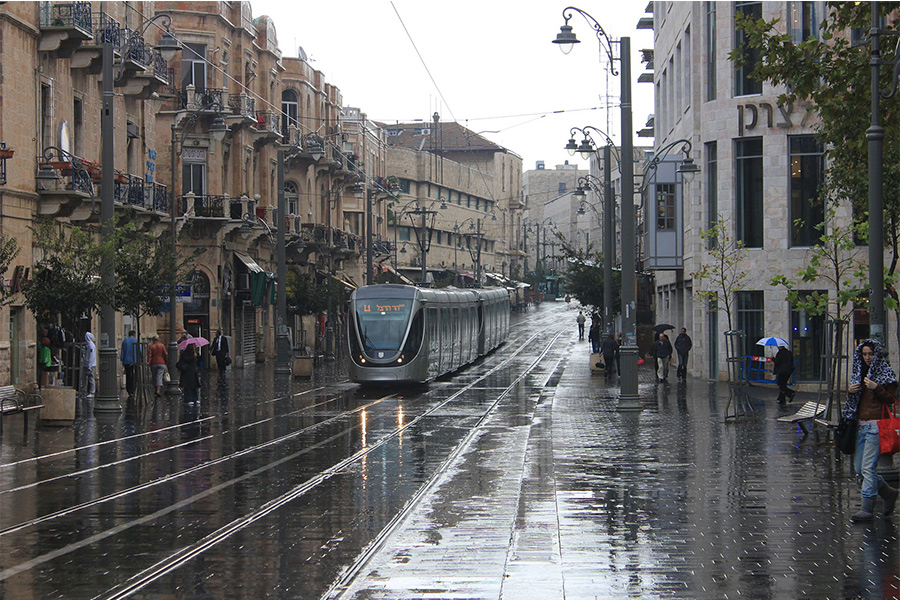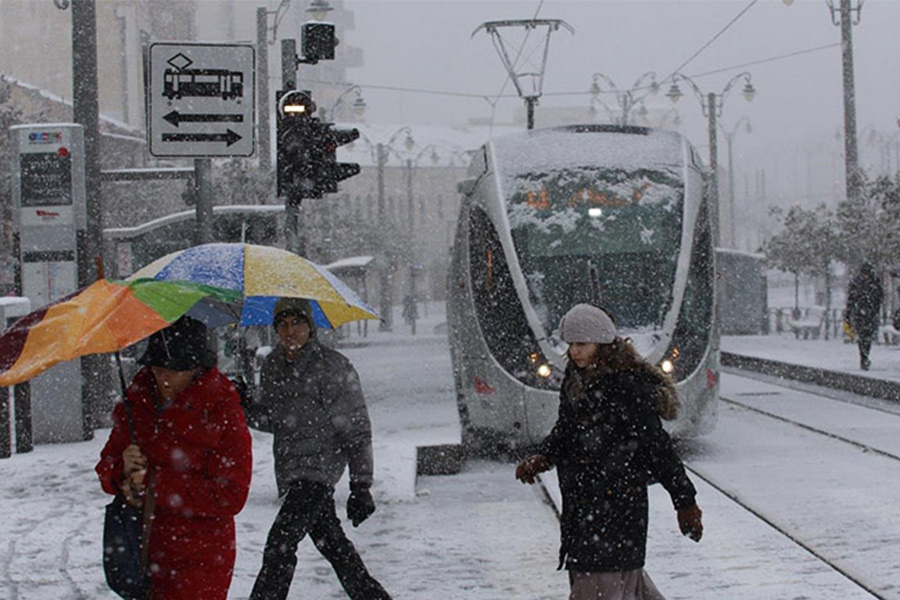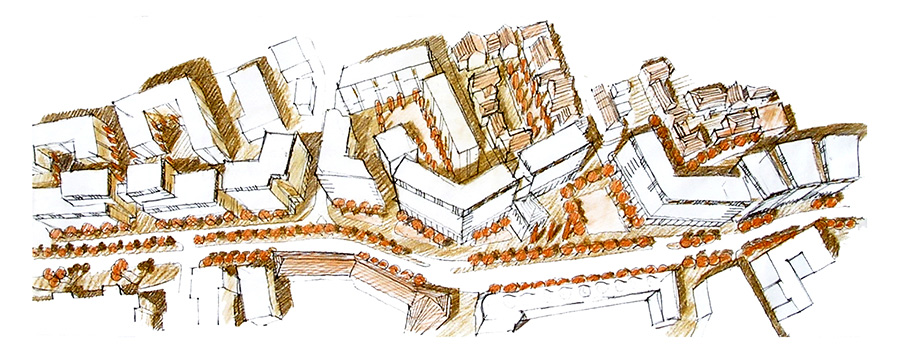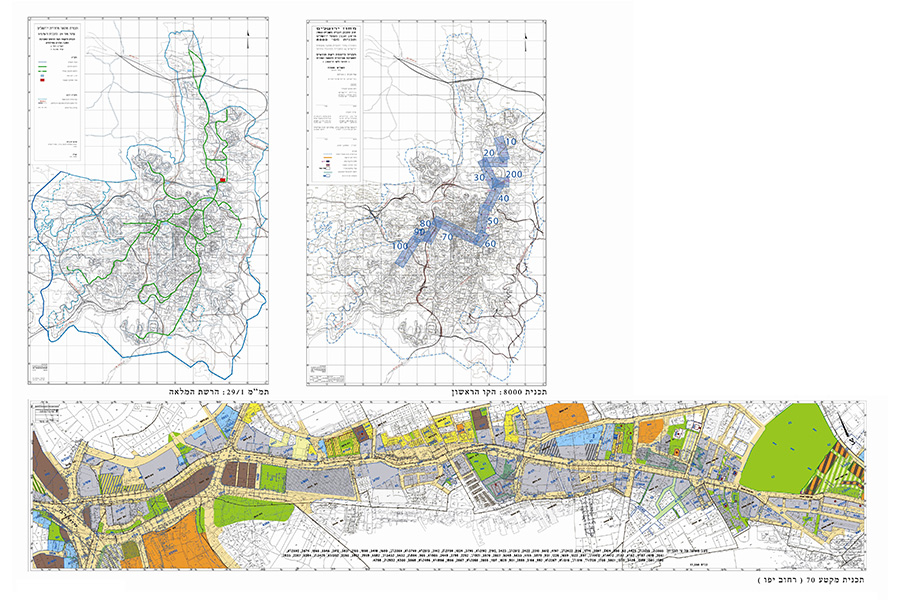Client: Jerusalem Transport Master Plan Team
Project Initiation: 1999
Location: Jerusalem, from Pisgat Ze'ev in the north to Mount Herzl in the south
Project Area: 800 dunam
Status: Approved
Program: 14 kilometers of railway tracks, 23 stations, depots and engineering facilities to enable the functioning of the light rail systems. Development, road upgrades and improved access in the public sphere
Planning Team: Ari Cohen, Nahum Meltzer, Elinoar Barzaki, Cesar Yehudkin
The plan defines the first light rail track line (the “Red Line”), including the locations of aboveground stations and the engineering facilities required to operate the light rail system. The red line connects the neighborhood of Pisgat Ze’ev in the north of the city, through the city center, the central bus station and the neighborhood of Beit Hakerem, to Mount Herzl. The total length of the line is about 14 kilometers and it represents the central pillar of the new public transport system, and the first one of the five mass transit lines planned in Jerusalem to be carried out.
The line is currently being extended to the neighborhood of Neve Yaakov in the north and through the neighborhood of Kiryat Yovel to the Ein Kerem “Hadassah” medical center in the south. The “Red Line” exceeded all expectations preceding its construction: it is used by 140,000 passengers every day, more than all the daily passengers of all other rail lines in Israel
The plan defines the first light rail track line (the “Red Line”), including the locations of aboveground stations and the engineering facilities required to operate the light rail system. The red line connects the neighborhood of Pisgat Ze’ev in the north of the city, through the city center, the central bus station and the neighborhood of Beit Hakerem, to Mount Herzl. The total length of the line is about 14 kilometers and it represents the central pillar of the new public transport system, and the first one of the five mass transit lines planned in Jerusalem to be carried out.
The line is currently being extended to the neighborhood of Neve Yaakov in the north and through the neighborhood of Kiryat Yovel to the Ein Kerem “Hadassah” medical center in the south. The “Red Line” exceeded all expectations preceding its construction: it is used by 140,000 passengers every day, more than all the daily passengers of all other rail lines in Israel





